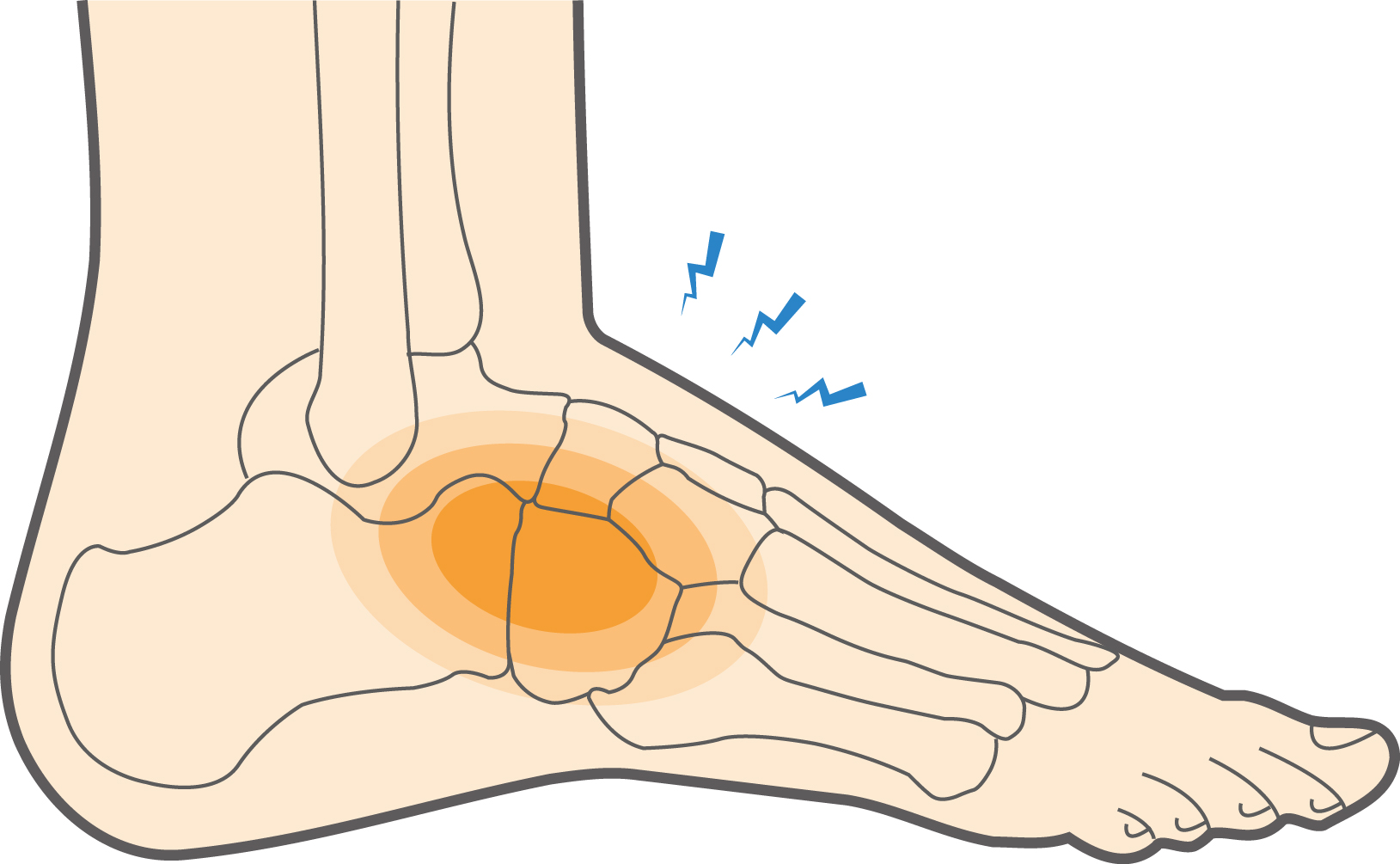The midfoot is the middle region of the foot that connects the back (hindfoot) with the front (forefoot). The midfoot bones and ligaments help to form the arch of the foot. The midfoot is supported by five bones: the cuboid, navicular, and the three cuneiform bones, as well as several ligaments. An injury to one or more of the ligaments that connect these bones is called a midfoot sprain, often resulting in mid-arch injury or midfoot instability.
A midfoot sprain can occur in different grades, each one classified by the severity of the injury:
- Grade I: There is stretching and microscopic tearing of the ligaments.
- Grade II: The ligaments are partially torn.
- Grade III: The ligaments are completely torn.
One type of severe midfoot sprain is called a Lisfranc injury, a serious form of foot trauma.


